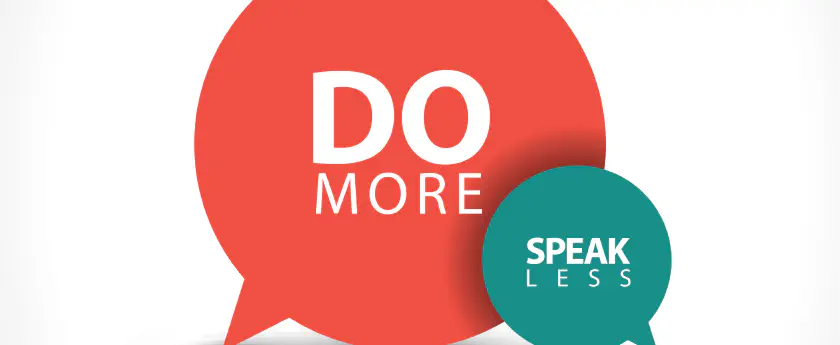Managing Productivity
The impact of your organization’s culture
The importance of job productivity is clear to all organizations. Service organizations, manufacturing, high tech, even non-profit charities share the need to do more with less. Those who have ignored it are no longer competitive or possibly no longer in existence. Utilizing an employee survey can help you maximize productivity in your organization.
No single “magic bullet” maximizes productivity.
As Dr. William Edwards Deming, considered the Father of the Quality Revolution, pointed out, most of your organization’s productivity is influenced by the actual production process itself. The equipment you use, the way you process your materials, the number of errors produced by the system, the pattern of workflow – provide the overall constraints of the relative efficiency or inefficiency of the system.
Of the factors inside your organization, which ones affect productivity?
Case Study
Our client had invested in new equipment and better procedures to improve the production process and had seen gains in productivity. However, since employees also affect productivity, the goal of this study was to identify the factors that influence productivity that are beyond the production process. If this employee survey research could identify the organizational factors affecting productivity, the company could maximize the contribution of its employees – thus, getting a better return on its investment.
About 700 managers and employees participated in the employee survey, which represented over 93% of the workforce. The company has a good balance of both white-collar and blue-collar employees. Thus, the survey results are not unique to white-collar or blue-collar employees.
This analysis was part of a larger study whose goal is to support an overall process of continuous improvement. The company is following our general CIP® process (Continuous Improvement Process) enabling workteams across the organization to create and implement improvements based on data gathered from the employee survey. This is a “grass roots” process that manages problems while they are small. Its goal is to put information into the hands of people who can use it to make changes that simultaneously strengthen the organization and improve employees’ lives at work.
How did we measure productivity?
This project included the entire organization, so no simple behavioral measure could be used (like the number of units per hour). Instead, participants responded to a cluster of survey questions that asked about their typical level of productivity (high to low), as well as questions that asked about how productive they thought they could be. The more they agreed that they were both productive and as productive as they could be – the more the total score indicated they were making good use of their current system and technology. Note that this measure stresses the effective use of what you have. It does not estimate what might be gained through alternative production methods. Can we trust the results of such a measure? The measure passed quality control tests of validity and reliability. It also correlated well with physical measures of employee productivity in previous projects. The combined evidence suggested the employee survey results could be trusted.
Planning
The root cause analysis of the employee survey data identified planning as the factor that most strongly affected productivity. Workgroups that had adequate planning for their needs were more productive. Be careful as this does not mean that the more planning you do, the better.
Action: Have workteams discuss, “Which aspects of our jobs would be better with additional planning?” The faster the pace and growth of your organization, the harder it is to plan. The more your organization has to respond to the competition or a changing environment, the less you are able to do long term planning. However, don’t use these as excuses. Look at your workflow and decide where planning (often involving teamwork and communication with other departments) will help. The goal is simply to do enough – not to do so much that you are now replacing action with planning or making yourself inflexible.
Policies and Procedures
The factor that had the second strongest impact on employee productivity was having policies and procedures that help people do their jobs. Often organizations view guidelines and procedures as ways to control people. They seem to operate from a “fear paradigm” that suggests if employees aren’t controlled, the result will be anarchy.
Action: Approach policies and procedures more like a music score – something to help people coordinate their activities and to help maintain quality. Have workgroups review the policies and procedures that affect them. Identify the ones that are efficient and help get work done. Identify the ones that would be better if revised or eliminated.
Teamwork within workgroups
The third strongest factor affecting productivity was having good teamwork within workgroups. Workgroups with better teamwork were more productive.
Action: Have workgroups discuss what teamwork means to them in terms of behaviors. When are they doing it well? Identify instances where it could be better. Work hard to avoid blame. Rather than talking about individuals – talk about workflow and how people can coordinate and support each other to increase the team’s effectiveness. As you will see in other employee survey white papers, two factors that consistently affect teamwork are authority and blame. Employees who don’t have enough authority to do their jobs or who tend to blame each other are less likely to work well as a team. Focus your discussion on behaviors and processes.
Clear roles and responsibilities
The fourth strongest factor affecting employee productivity was people having a clear idea about what they were supposed to be doing. The more people knew their responsibilities, the higher the productivity.
Action: Have work teams periodically review what each person is expected to do. The more you work on “customized” or changing projects, the more people’s responsibilities should be defined in general terms. What you want is a description that is clear enough so everything gets done, and you don’t find duplication of work. You don’t want to be so restrictive that you create an “it’s not my job” mentality.
Desire to stay
It is hard to be concerned about productivity if all you want to do is leave the organization or transfer to a different department. Maintaining employees’ enthusiasm for their jobs and the organization is important. For information about managing desire to stay (retention or turnover), see other employee survey white papers.
Action: Many employees are cautious about indicating a desire to quit for fear of retaliation. If you think employees want to quit or transfer from a particular group (especially if the group has a history of turnover or transfers), then it is appropriate to try to identify the factors that may be encouraging people to want to leave. Interviews, focus groups, or anonymous written comments or feedback may help.
While we see similar underlying causes of productivity in a number of organizations, each organization is different. If you feel that productivity is low for a group, the five factors identified for this organization by our employee survey can give you ideas of what to look for. However, only an analysis of your organization would identify the factors that may be unique to your organization.




























 By submitting this form you agree to our
By submitting this form you agree to our